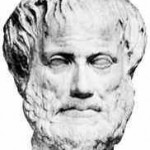New Law School Poll Results Offer Insight as the Race for Governor Takes Shape
It is still a bit over nine months until Wisconsin’s election for governor in November and the major parts of the campaigns, especially the expected heavy rounds of television advertising, are far from beginning. So Professor Charles Franklin, director of the Marquette Law School Poll, cautioned against reading too much into the first round of polling in 2014 as results were released Monday.
That said, the results attracted attention in political and news circles across Wisconsin and beyond when they showed Gov. Scott Walker, the Republican incumbent, had a six percentage point lead over Mary Burke, the only major Democratic challenger. In late October, the Law School poll found Walker was leading Burke by two percentage points.
Franklin noted that in both polls, Walker was the choice of 47% of those polled. However, in October, Burke got support from 45% and in the new results, based on polling from Jan. 20 to 23, she came in at 41%.

